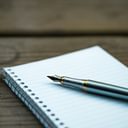Oklahoma: Clayton Lockett
Report from the Oklahoma Department of Public Safety on the execution of Clayton Lockett (Sept. 4, 2014)
QUOTATIONS FROM THE OKLAHOMA REPORT:
- The physician had never attempted femoral vein access with a 11⁄4 inch needle/catheter; however, it was the longest DOC had readily available. An additional central venous catheterization kit was available, but the physician did not think about utilizing one for femoral access.
- The physician approached Lockett and indicated to Warden Trammell that something was wrong. He looked under the sheet and recognized the IV had infiltrated. At this same time, Warden Trammell viewed what appeared to be a clear liquid and blood on Lockett’s skin in the groin area. The physician observed an area of swelling underneath the skin and described it as smaller than a tennis ball, but larger than a golf ball. The physician believed the swelling would have been noticeable if the access point had been viewed during the process.
- Warden Trammell and Director Patton both acknowledged the training DOC personnel received prior to the execution was inadequate. Warden Trammell stated the only training she received was on-the-job training and that DOC had no formalized training procedures or processes concerning the duties of each specific position’s responsibility. The warden and director both indicated DOC had no training protocols or contingency plans on how to proceed with an execution if complications occur during the process.
- General Counsel Mullins further told Director Patton that they would begin preparing a stay at the direction of the Governor. Lockett died prior to the order for a stay being relayed to the personnel inside the execution chamber. There was conversation inside the chamber about administering life-saving measures to Lockett, including transporting him to the emergency room, but no order was given.
- Autopsy report on Clayton Lockett (August 28, 2014)
Arizona: Joseph Wood
STATEMENT FROM ARIZONA DEPARTMENT OF CORRECTIONS on their review of the execution of Joseph Wood (July 25, 2014) Log of Joseph Wood’s Execution from Arizona Department of Corrections (July 23, 2014) Stay Order for Joseph Wood from the U.S. Court of Appeals for the Ninth Circuit (later overturned by the U.S. Supreme Court) (July 19, 2014); Chief Judge Kozinski of the 9th Circuit dissenting from the denial of rehearing en banc (July 21, 2014)FDA Litigation
Ruling by the U.S. Court of Appeals for the District of Columbia Circuit,finding that the FDA failed to fulfill its duties when it allowed, without inspection, the importation of sodium thiopental for use in executions (Cook v. FDA, July 23, 2013, affirming in part Beaty v. FDA (below)). Read DPIC posting.
Beaty v. FDA, United States District Court for the District of Columbia, March 27, 2012. Read DPIC posting on the case. Letter to Attorney General Eric Holder from attorneys for Georgia death row inmate alleging illegal importation of sodium thiopental. (Feb. 24, 2011) Response from attorneys who filed suit against the FDA to the letter from the state AGs to Eric Holder (Feb. 16, 2011). Letter to Attorney General Eric Holder from 13 state attorneys general requesting help in securing lethal injection drugs (January 25, 2011) Response from Attorney General Eric Holder (March 4, 2011) STATEMENT FROM THE U.S. FOOD & DRUG ADMINISTRATION concerning the importation of lethal injection drugs (Jan. 4, 2011)Selected earlier legal developments
- U.S. District Court Judge Aleta Trauger’s ruling holding Tennessee’s lethal injection protocol unconstitutional (Sept. 19, 2007)
- U.S. Court of Appeals for the Eighth Circuit ruling in Taylor v. Crawford, upholding Missouri’s lethal injection process. (June 4, 2007)
- U.S. District Judge Fogel’s Request for Additional Briefing on certain questions following Sept. 2006 hearings (California challenge)
- U.S. District Judge Fogel’s Original Order in Morales
- U.S. District Judge Fogel’s Second Order in Morales
- Decision of Appellate Division of New Jersey Superior Court ordering a hold on executions to allow clarification of lethal injection procedures
- Petition for Certiorari, granted by the U.S. Supreme Court, in Hill v. Crosby
- Petition for certiorari filed in Abdur’Rahman v. Bredesen, a Tennessee capital case in which the issue of lethal injection has also been raised (cert. denied, May 22, 2006).
- U.S. District Court order in North Carolina regarding lethal injection of Willie Brown on April 21, 2006.


